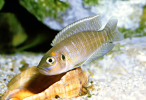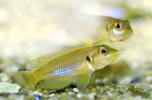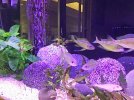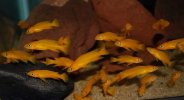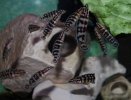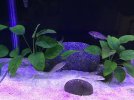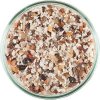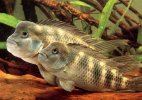Okay here is another one... Why is it most seem to keep multi's? I dont see a lot keeping Brevis and then there are others I really like that it seems no one is keeping.
An example of ones I like a lot is Lamprologus ocellatus “Gold”and also Lamprologus ornatipinnis. Are these harder to care for? can they too be mixed with julies?
It's simply a case of supply and demand: Multi's are entry-level shell-dwellers, and breed like guppies- just add water- so all you need is a few people in a given area to flood the market, and suddenly they're everywhere. This is not to take away from Multi's; they are cute, and a tank full of them (which is inevitable) can be charming. That said, fishes like Neolamprologus brevis and Lamprologus ocellatus are, in my opinion, both prettier and more interesting. Two pair of either of these in a 30 would offer lots of drama, whereas with Multi's it's just a perennial game of hide and seek. L. ocellatus is feisty and flashy, especially the 'blue' and 'gold' forms, while N. brevis has attitude to burn, and forms really strong pair bonds, with the male typically twice as large as the female. In terms of care, they're all pretty similar, but I think you'd be happier with either N. brevis or L. ocellatus.

Neolamprologus brevis-
Lamprologus ocellatus-
